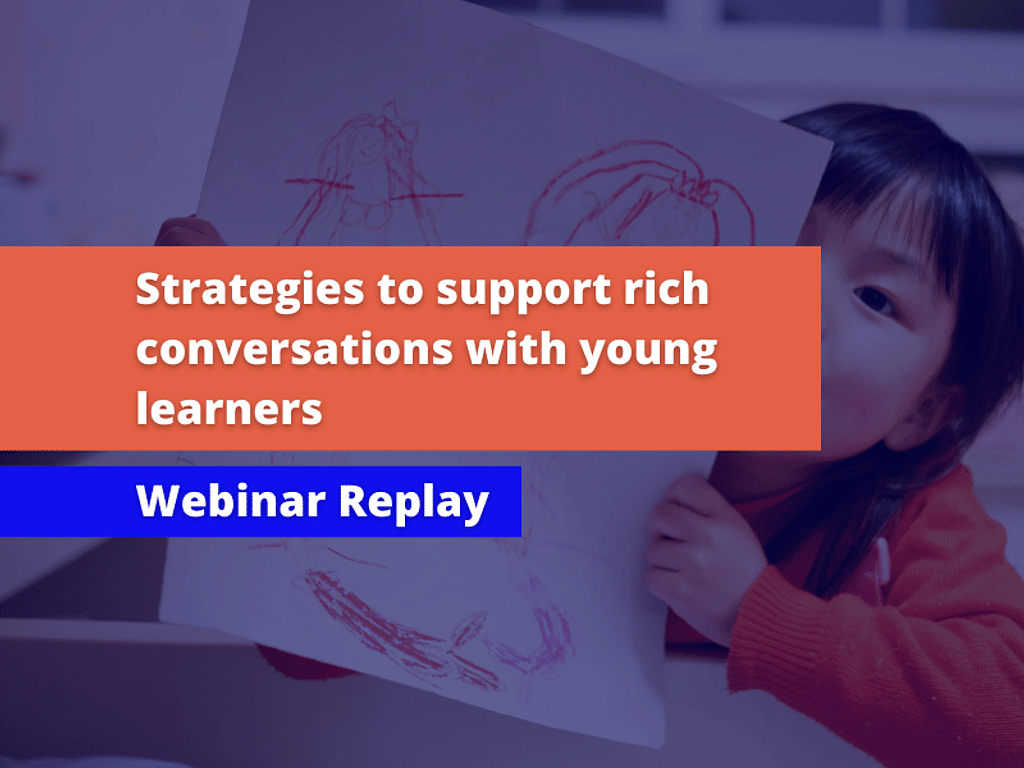Evidence for Learning’s Early Childhood Education Toolkit shows that communication and language approaches consistently show positive benefits for young children’s learning. Oral language acquisition is important because it gives children a platform to communicate effectively. It predicts children’s success in formal classroom settings and life trajectories more broadly.1
This page is an overview of current evidence on how to support oral language development in young children aged two to five years old. It draws on:
- relevant topics from our Early Childhood and Education Toolkit;
- a systematic review of the Australasian literature on strategies to support rich conversations with young learners; and
- other practical, evidence-based resources that we hope are useful for early childhood educators and educational leaders.
References
1. Girard, L.C., Pingault, J.B., Doyle, O., Falissard, B., & Tremblay, R.E. (2015). Developmental associations between conduct problems and expressive language in early childhood: A population-based study. Journal of Abnormal Child Psychology.
Communication and language approaches
Based on a systematic review of the Australasian literature, Evidence for Learning has three tips sheets on oral language development for educators of two to five year olds.
Tip Sheet 1: Creating spaces for children’s talk
Oral language is the way children communicate their views, learn to understand others, and make discoveries. Educators can support and enhance children’s oral language by engaging “in sustained communication with children about ideas and experiences” (Early Years Learning Framework). This tip sheet provides evidence-informed strategies to create opportunities for children’s talk in early childhood education and care settings for children aged 2 – 5 years.
Tip Sheet 2: Curious about questions?
Oral language is embedded across the Early Years Learning Framework and is central to educators’ work. Asking questions is a common approach to prompting children’s talk and participation in conversations, however not all questions are equal. This tip sheet explains question qualities and describes what you can do when the questions you ask are ‘tricky’ for children aged 2 – 5 years.
Tip Sheet 3: Keeping the conversation going
When a child is an active participant in shared, extended conversations, they take more opportunities to talk, their talk is more complex, and educators provide a positive model for oral language use. Oral language is embedded across the Early Years Learning Framework and is central to educators’ work. This tip sheet provides educators with evidence-informed strategies to sustain and extend conversations with children aged 2 – 5 years.
Summary Tip Sheet 4: Oral language development for educators
Strong oral language skills provide children with a platform to communicate effectively and predict future success in learning. This resource for early childhood educators is a summary of the evidence in Evidence for Learning’s oral language tip sheets and includes considerations for engaging with families about oral language development.
Evidence for Learning would like to acknowledge Professor Karen Thorpe, Dr Sally Staton and Dr Sandy Houen from the University of Queensland for their work on these oral language resources. We also thank the other early childhood education researchers and educators who provided input to these resources.
Tip Sheet 1: Creating spaces for children’s talk
Uploaded: • 263.6 KB - pdfTip Sheet 2: Curious about questions?
Uploaded: • 1.2 MB - pdfTip Sheet 3: Keeping the conversation going
Uploaded: • 270.2 KB - pdfSummary Tip Sheet 4: Oral language development for educators
Uploaded: • 217.3 KB - pdf
Webinars


Blog
